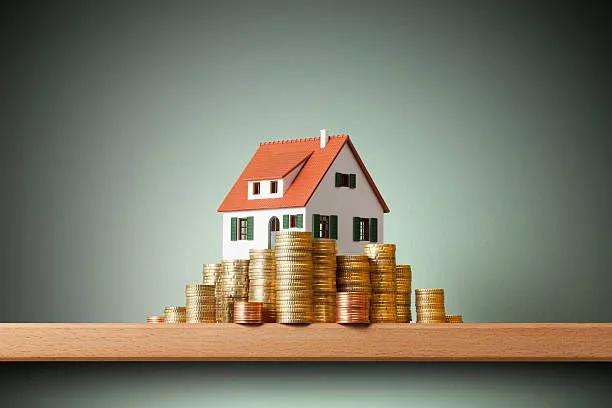Notwithstanding the buzz around newly invented digital assets, our demand for classic investments such as real estate has not diminished.
However, as everyone who has seen rising housing prices knows, investing in real estate is not cheap. Furthermore, the property is one of the most illiquid assets, and it comes with a slew of additional charges like legal and agency fees.
Read The Wealthy Love Real Estate Investments: Find Out Why and Why You Should Invest in One Too.
Creating a solid real estate investment portfolio?
Diversification is a beneficial move in investing, as most of us know – placing your eggs in multiple baskets decreases risks while potentially improving returns.
A diverse portfolio in property investing would comprise many properties of different categories (e.g. commercial vs. residential, different regions (e.g. Singapore vs. the US), with varied features (e.g. rental yield vs. en bloc potential), and employing various investment techniques.
This technique is unworkable for ordinary investors like you and me. However, because some real estate platforms allow investors to co-invest in homes, it is now feasible to build a diverse property portfolio at a considerably reduced cost.
Read Aspire financial freedom? Find Out How Real Estate Investment Can Help You Achieve That!
For the time being, let’s concentrate on three important tactics that investors employ to create their property portfolios and how they may apply to your life stage.
- Core real estate investment approach
As the name indicates, a Core approach is the core of many investors’ portfolios. It contains low-risk properties that are in good condition, are primarily or completely leased with consistent cash flow and are frequently in ideal locations.
These indicators speak to solid underlying fundamentals, allowing the investor to hang back and reap the benefits of the investment with little effort or labor required on the property. It’s no surprise that most Core investors are buy-and-hold investors.
A Core portfolio is ideal for people interested in asset preservation and keeping up with inflation as a lower-risk strategy. However, despite the lesser risk, its rewards are minimal.
- Value-added real estate investment approach
Investors can utilize the higher-risk Value-Add method to enhance their Core portfolios or use it to generate possibly better returns from existing property assets.
Value-added qualities are those that can be readily improved with a few tweaks. For example, they might be old and in dire need of repairs, inefficiently managed, not fairly priced about the rental market in the region, or a mix of the aforementioned.
With a capital infusion, it is feasible to renovate and reposition a Value-Add property to recruit a better mix of tenants, offering prospects for improved revenue and capital gain.
This, however, carries a larger amount of risk than Core characteristics. It is better suited to seasoned property investors who can recognize and capitalize on the possibilities of such assets.
- Opportunistic real estate investing approach
The Opportunistic approach is at the upper end of the risk and return scale. Opportunities in real estate can range from dilapidated homes that require extensive renovations to greenfield ventures (ground-up real estate developments).
Essentially, these are higher-risk buildings that need to obtain the necessary permissions and carry out extensive construction or repair work.
Opportunistic project returns are often “back-end weighted,” which means that the financial benefits of the endeavor will take time to manifest. This makes an Opportunistic approach dangerous, especially if your investing horizon is somewhat short.
Opportunistic initiatives have some of the maximum potential yields of 20-25% every year. But, investors must be ready to incur substantial risks and be patient.
Employing approaches that correspond to your life stage
Investors should adjust their portfolios to their life phases, risk tolerances, and financial goals because no two investors are the same.
A retiree, for example, who has built a lifetime of wealth, is likely to be concerned with wealth preservation and receiving a consistent income from his assets. A prudent mid-career professional may choose a comparable Core portfolio but participate in the odd Value-Add transaction.
A young professional with a higher risk tolerance and a longer investing horizon, on the other hand, may pursue exposures through an Opportunistic portfolio.
Assetmonk is India’s best real estate investment platform with properties in Chennai, Bangalore, and Hyderabad. It offers commercial real estate investment opportunities such as fractional ownership and crowdfunding starting at Rs. 25 lacs. IRRs range from 14 to 21%.
Investors may also use Assetmonk to modify their property portfolios and strategies to meet their needs. Our products are divided into categories to accommodate investors of various economic levels. Growth, Growth Plus, and Yield are the three categories. Assetmonk has a proven track record of generating returns on property investment opportunities.
Considering Real Estate Investment? Here Are Approaches To Develop A Strong Property Portfolio FAQs
Why real estate is the best form of investment?
In the long run, real estate can provide extremely large profits. It can deliver consistent cash flow via passive income and has various tax advantages.
Why real estate is the safest investment?
Real estate investing, unlike other market-linked investment alternatives such as equities and mutual funds, has a low volatility quotient. It is still one of the safest investment alternatives in India since it is a physical asset.





 Listen to the article
Listen to the article




